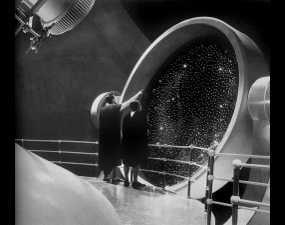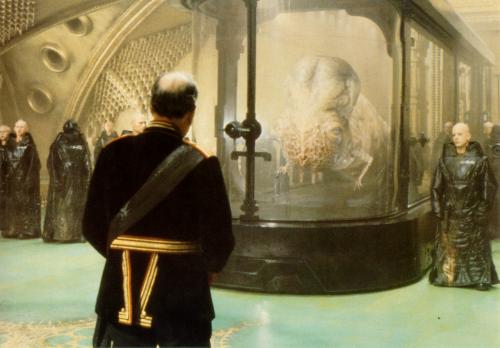There have already been a lot of scientists and science popularizers and others looking at the science of Christopher Nolan’s ambitious film Interstellar. Kip Thorne, the eminent Caltech scientist powering much of the science, has written a book and there’s even a TV documentary.
Interstellar is a gorgeous film with fantastic visuals that takes us to places I’ve never seen before on screen, namely the environment around a supermassive black hole some 100 million solar masses, dubbed Gargantua. I enjoyed the film while watching it, but felt unsettled about some things. I hoped these things would make more sense in hindsight, but they don’t unfortunately.
Let me be clear. I recommend seeing Interstellar, and enjoying the many things it got right and the spectacle it created. The rest of this post will be my take over the science elements relying on my expertise as an astrophysicist who studies supermassive black holes and as a science fiction novelist who tries to put exotic but accurate astrophysical environments in front of readers. This is the kind of blunt and honest report I’d write to a screenwriter asking me to provide feedback on the scientific aspects of their story.
There are a few things early in the story I’d be critical about (e.g., our characters apparently drinking beer seven years after the blight has wiped out wheat), but let me focus on the astrophysics, aspects of which I have not seen considered elsewhere. More specifically, let me focus on the astrophysics that makes the entire plot of Interstellar kind of ridiculous.
First, we have an accretion disk around our supermassive black hole. The disk is apparently “anemic” even though it has temperatures like that of the surface of our sun. Even an “anemic” organized disk like this around a black hole of a 100 solar masses, as Gargantua apparently has, puts out too much heat and hard radiation for any planets to survive anywhere close to it. Drop its output, and you lose the organized, thin disk that is clearly present. Furthermore, there is no orbit that can stay far from this disk. There won’t be any planets. And if there were planets, somehow surviving and somehow in a place where they are the right temperature to colonize, they would not stay that way for long. The output from these disks varies on human timescales. We freak out, and rightly so, about a tiny temperature change here on Earth that is nothing compared to what a planet around Gargnatua would experience. There is no way I can make these planets make sense.
A blighted Earth is a million times more habitable than any planet could be in Interstellar. Venus, Mars, or the moon even.
I’m sure the idea for the movie came about to highlight effects like time dilation close to the event horizon of a black hole. That part in the movie doesn’t even make sense. A “planet” with a time dilation as depicted in the movie would have to be within 100 meters of the event horizon, which is a pretty tiny distance to fit an Earth-sized planet. And there wouldn’t be a radio signal from any previous mission that could be detected, because there would be a similarly extreme gravitational redshift putting into a very long wavelength part of the electromagnetic spectrum, with a correspondingly weaker signal strength.
Our rocket-powered lander could also not manage the delta vees required to get to this location and get back out. A shame, after a multi-stage rocket was shown to get off the Earth. We lose all semblance of reality for the technology on display.
There are other nits to pick, but there’s no need to pick them after making this main point: colonizing the unrealistic planets shown in Interstellar is akin to colonizing a wooden raft in the caldera of an active volcano. It’s not justifiable as a “Plan A” or a “Plan B” or even Ed Wood’s “Plan 9” (which is more feasible).
If I were revising this very flawed script and wanted to highlight the features of a black hole like the time dilation, here’s how I would do it. Make the blight something more like radioactive contamination with a half-life of a few thousand years, and get rid of hibernation technology. Let the black hole become a time machine to go into the future to a time when the Earth is safe again. That’s my best idea for salvaging something that just doesn’t work.
It’s unfortunate that we get so many of these movies these days, where some effort has been put into the science, but not applied evenly to the entire story. I’m thrilled to have the gravitational effects of the black hole portrayed so accurately, and to get real physical effects like time dilation having real effects on the story, but the story itself is flawed. I am reminded of the Star Trek reboot, where so much effort was made to get Saturn and Titan right, but no one seemed to realize that having a faster-than-light warp drive means that the event horizon of a black hole is not actually a problem to escape.
OK, I’ll stop being Professor Buzzkill now. If you liked the movie, please keep liking it. It was cool and got a lot of things right, and will, I hope, pave the way for more big-budget movies set in interesting astrophysical environments.











1 Comment